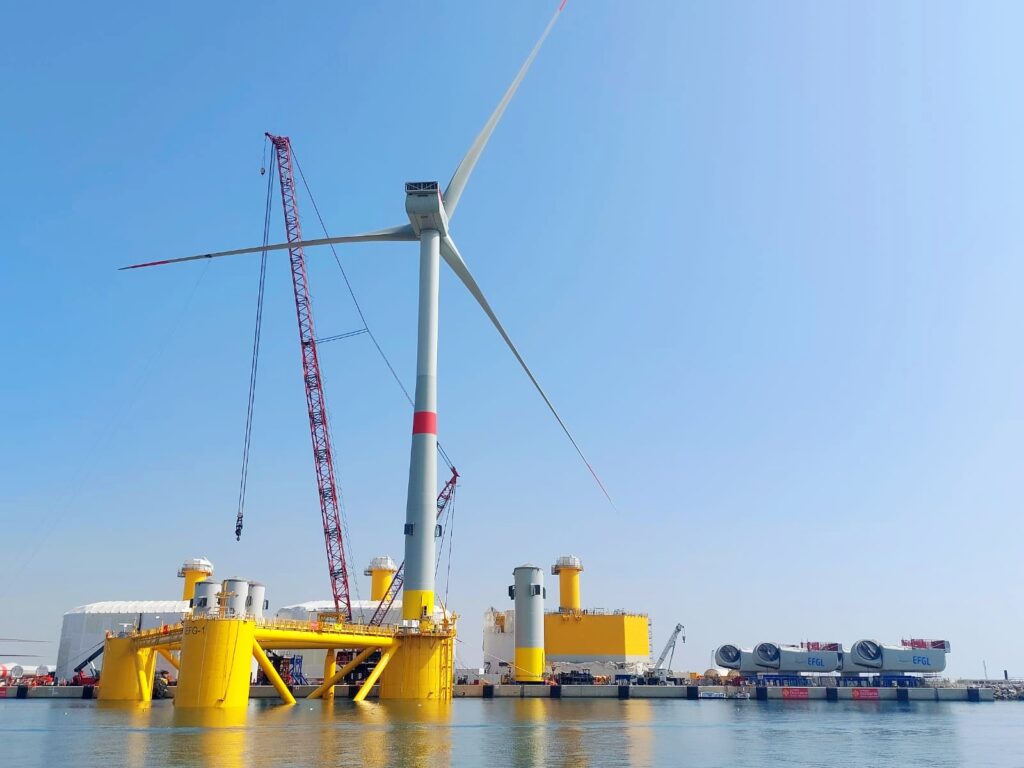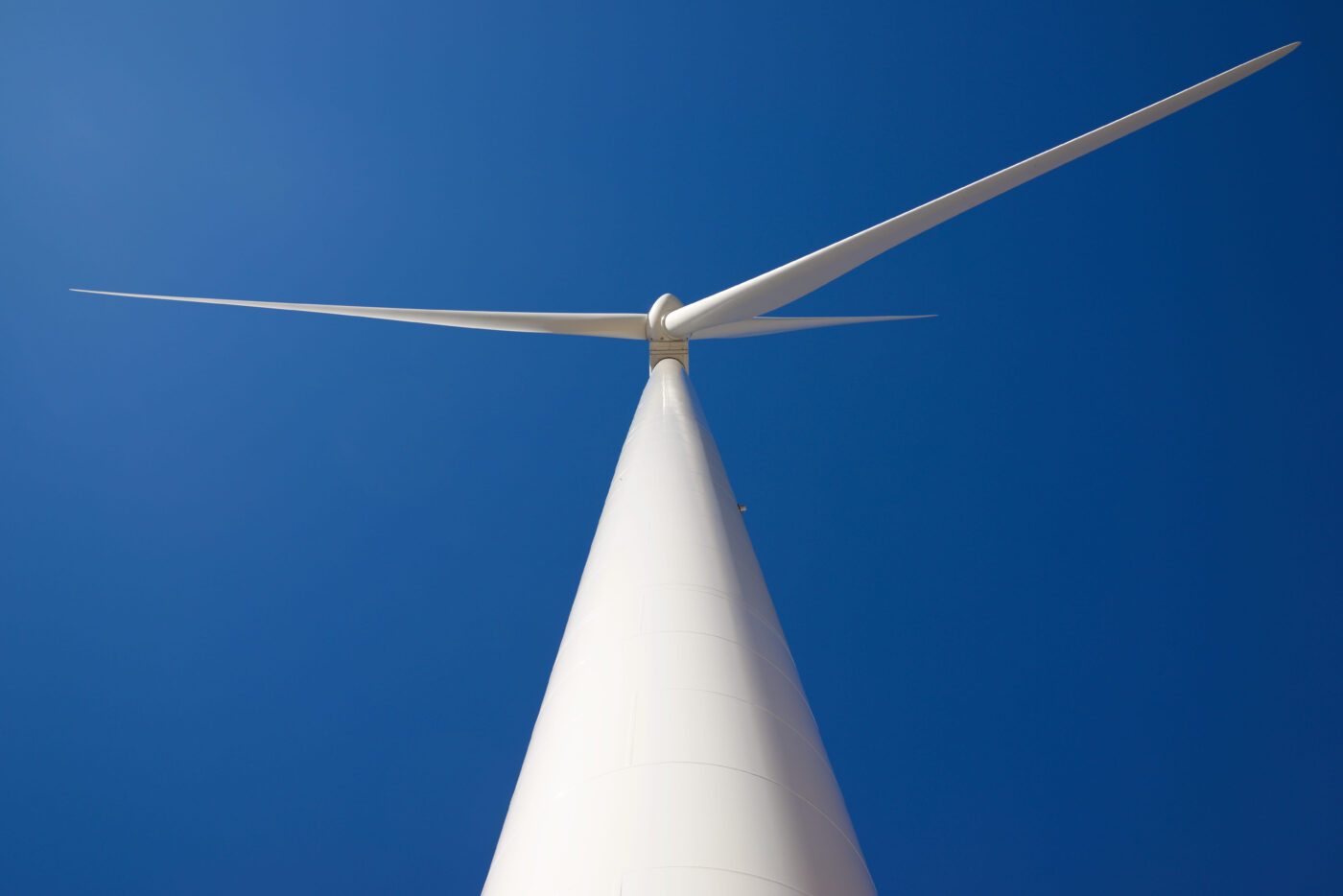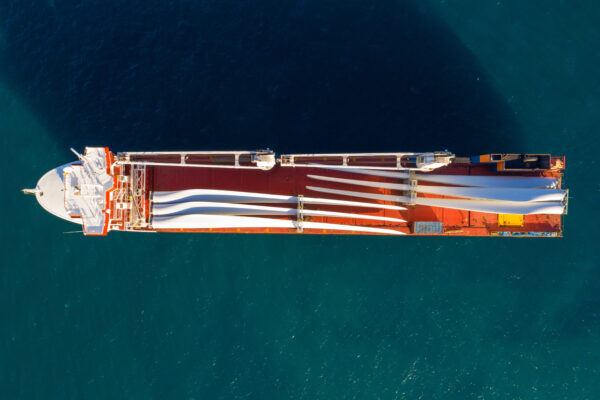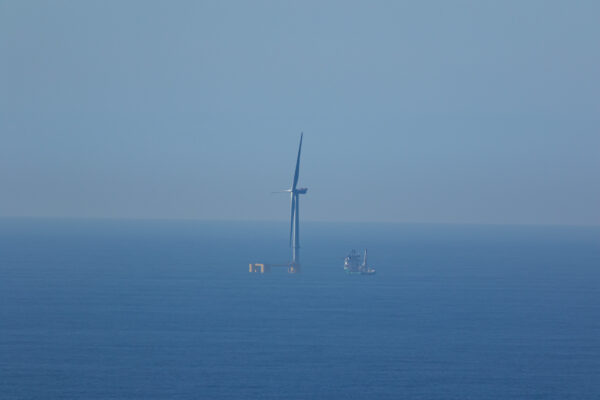The Éoliennes Flottantes du Golfe du Lion (EFGL), a 30 MW pilot off the coast of Leucate and Barcarès, has entered its next phase. Developers Ocean Winds and Banque des Territoires have completed the assembly of the first 10 MW Vestas turbine, now mounted on its floating foundation. The remaining two turbines will follow in the coming weeks, before all three are towed 16 kilometres offshore for installation. Commissioning is currently projected for late 2025 or early 2026.

Each turbine will stand on a WindFloat semi-submersible foundation supplied by Principle Power, a design developed to remain stable in deep water and rough seas. The floating structure allows turbines to be deployed farther from shore, where fixed-bottom foundations aren’t feasible.
Putting floating tech to the test
Once in place, EFGL will become the Mediterranean’s second operational floating wind farm, following the recent commissioning of Provence Grand Large. While modest in size, the project aims to assess how floating technology performs in deeper and more dynamic waters, as well as to test procedures for construction, anchoring, and maintenance in offshore conditions.
But its ambitions go beyond energy. EFGL is also the first floating offshore wind farm worldwide to integrate artificial marine habitats as part of its design. In collaboration with ECOCEAN, developers have installed 32 Biohuts — steel-framed structures that mimic natural fish nurseries — on one of the platforms. Each Biohut includes a core made from oyster shells to foster the marine food chain, surrounded by a protective cage that provides shelter for juvenile fish. The aim is to improve marine biodiversity around the turbines by creating a favourable environment for small marine species.
Lessons learned from EFGL will contribute directly to the development of the 250 MW Éoliennes Flottantes d’Occitanie (EFLO), another floating initiative from Ocean Winds and Banque des Territoires aiming to scale up the approach across the region.



